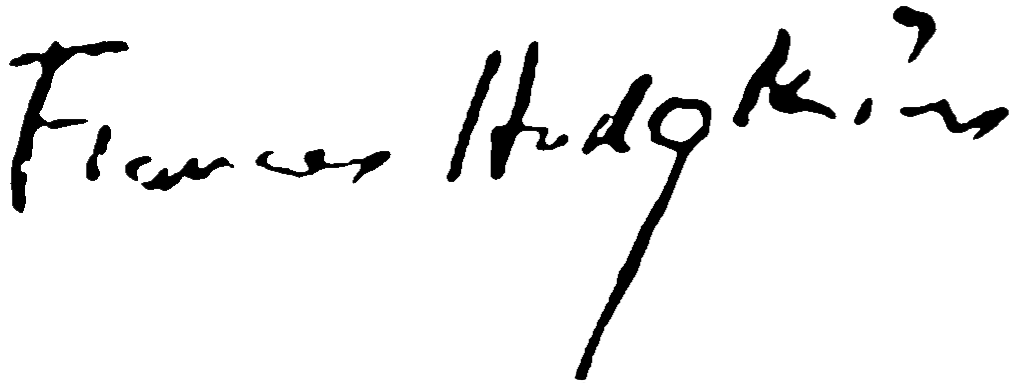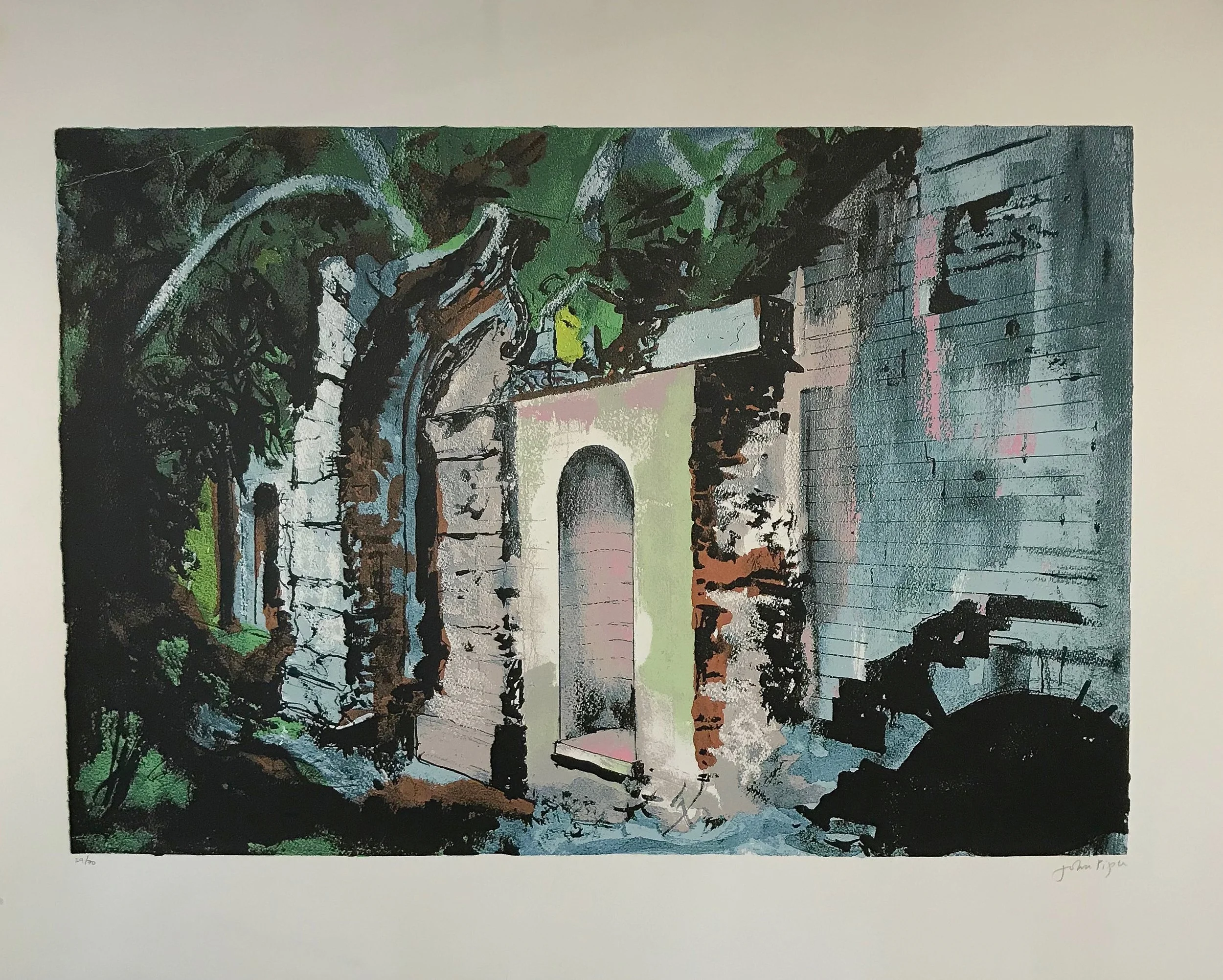JOHN PIPER
Cascade Bridge, Halswell
Screenprint on wove paper, 64.8 x 85.4 cm
Signed John Piper and dated 1987
Inscribed ed. 39/70
Published by Marlborough Fine Art, London
From Frances Hodgkins to John Piper, c. Sep 1941, Studio, East St, Corfe Castle, Dorset
‘I am looking forward eagerly to tomorrow’s Spectator & your verdict of the Show, ... I look for severity as well as gentleness & wisdom & wit in all you write. I can only make a feeble guess at all that you have done to make my Show a living valid thing. What time I have been eating my heart out down here because I can’t see my own darling Show’.
John Egerton Christmas Piper CH (1903-1992) was born in Epsom, England, and educated at Epsom College, the Richmond School of Art and the Royal College of Art, London. In the early 1930s Piper exhibited with the London Group and became secretary of The Seven & Five Society which included Henry Moore, Ivon Hitchens, Ben Nicholson and Barbara Hepworth. It is believed he met Frances Hodgkins through the society when she was elected a member in 1929. The influence of The Seven & Five Society is clearly evident in Piper’s work, seeing him embrace a number of media, including painting and print-making.
Piper, together with writer Myfanwy Evans, founded the contemporary art journal Axis in 1935. It was through his work as an art critic for The Listener, his work on Axis and his membership with The Seven & Five Society, that Piper was at the forefront of the modernist movement in Britain throughout the 1930s. By the late 1930s Piper had returned to a more naturalistic style. He concentrated on landscape and architectural subjects in an emotionally charged approach that was a continuation of the nineteenth century English Romantic tradition.
At the outbreak of the Second World War, Piper was commissioned by Sir Kenneth Clark and the War Artists’ Advisory Committee to capture the effects of the war on the British landscape. The devastation of the Blitz was easily assimilated to Piper’s personal interest in old ruined buildings. Cascade Bridge, Halswell is typical of what Piper is famous for in Britain; his war-time work, documenting bombed churches, most notably in Coventry, Bath and Bristol. The resulting work utilised to great effect his interests in architecture, abstraction and printmaking. The subject here also illustrates Piper’s other, closely related, major subject matter of country houses and estates, also victims of deterioration. He had a sell-out exhibition in 1940 at the Leicester Galleries, featuring several works of derelict ruins.
Piper & Evans married in 1937 and became two of Frances Hodgkins’ closest friends in the latter period of her life. Piper regularly wrote to Hodgkins and reviewed her exhibitions exclaiming on one occasion, ‘Frances those paintings are knock-out’after viewing her 1941 Leicester Galleries exhibition.

